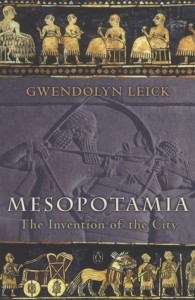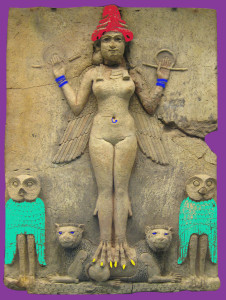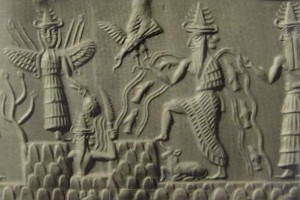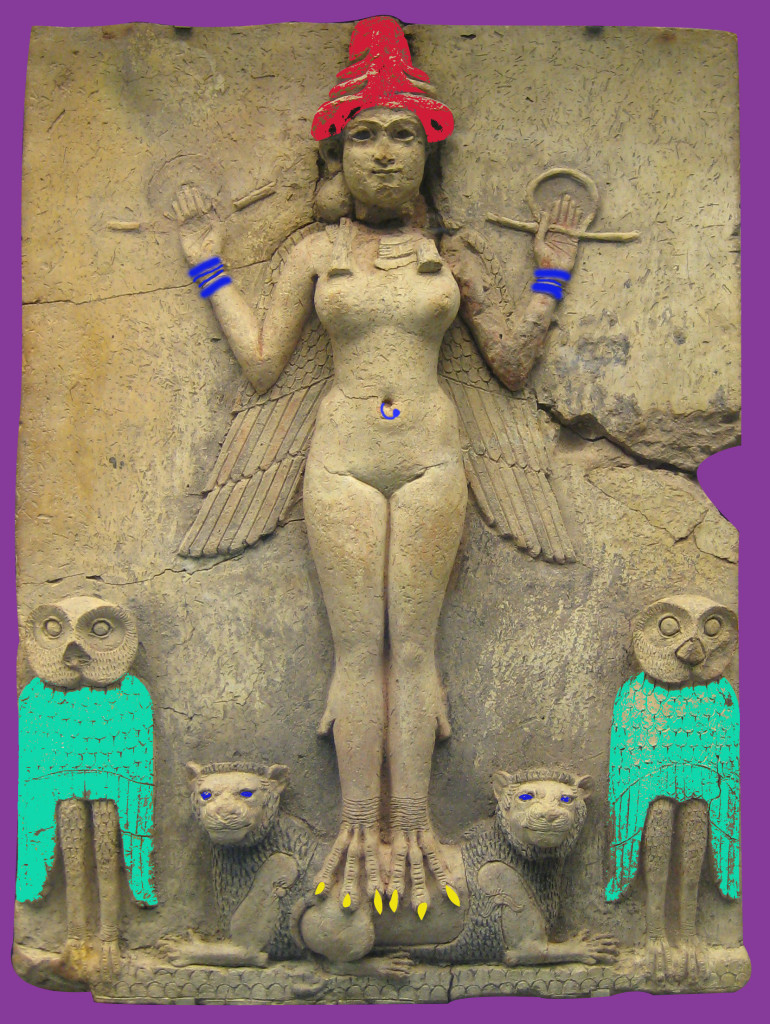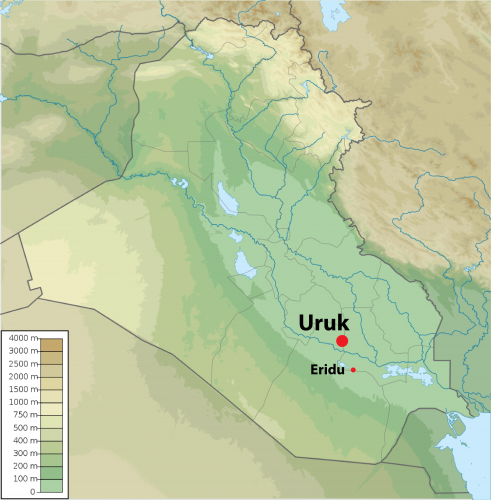
Nammu is the Mesopotamian great goddess of water, who created heaven and earth. She is considered the mother of everything and everyone, including the gods.
She was worshiped at the temple of Eridu, attested in Mesopotamian literature as the very first temple and probably predating the arrival of the Sumerians. This temple site was later repurposed to center a god of the subterranean waters, called Enki by the Sumerians, who was considered her son. Though Nammu makes brief appearances in Sumerian mythology, she had no known cult in historical times.
I wonder if Nammu might be the Sumerian title of a mother goddess worshiped by people in southern Mesopotamia before the Sumerians gained ascendency in the region. This might explain her role as remote ancestor, her association with Eridu and its swampy surroundings, and her lack of known cult following the rise of Sumerian cities.
Nammu’s “son,” who eclipsed her worship, may or may not have originally been Sumerian, although Enki is a Sumerian deity. There is a sweet story about the transfer of religious (and possibly political and economic) primacy from Eridu to the city of Uruk called “Inanna and the God of Wisdom.” I’ll write about it in a future post.
Temples and priesthoods for millenia claimed lineage (actual or ideological) to Eridu. A pool or small replica of a pool could be found even in northern Mesopotamian temples, representing the watery area surrounding Eridu. This water was believed to be part of the fluid of creation, the Abzu, emanating from Nammu herself.

